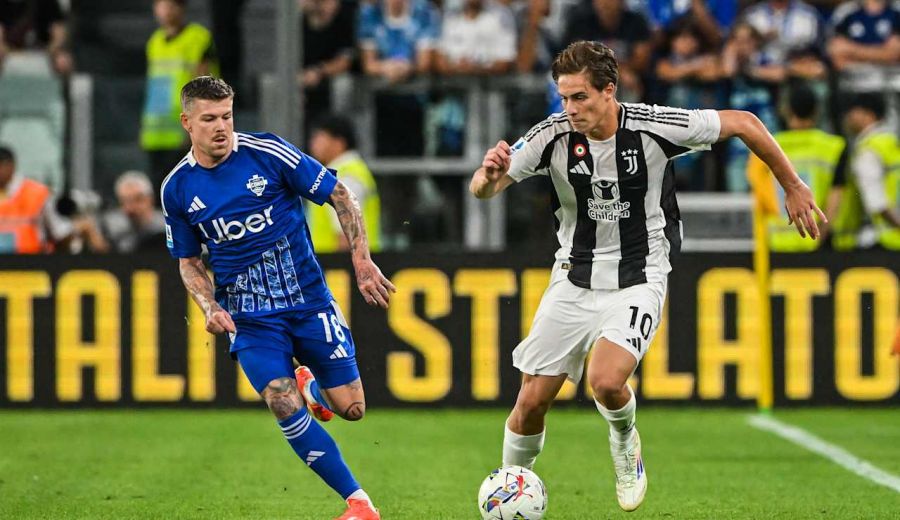Subtotal $0.00
Olmo injury update
Injury specifics and immediate prognosis
Barcelona received fresh, unwelcome news from the training ground about Dani Olmo El Clasico injury. The calf issue was sustained while Olmo was with Spain on international duty. Mundo Deportivo confirms that the Spain forward will return to Barcelona this weekend for imaging and further assessment. The initial diagnosis points to a muscular strain rather than a full rupture, but calf injuries can be unpredictable. Barcelona medical staff will monitor the response to treatment closely. A cautious approach is the order of the day given the upcoming schedule. Fans should expect a detailed update after imaging and next steps are clear. The key is to determine whether this is a short-term setback or a longer layoff in the run-up to crucial fixtures.
The club has urged patience as the data comes in. Early indications emphasize a conservative timeline until clear results are available. Dani Olmo El Clasico injury has implications beyond this single match. The coaching staff will weigh his value against the risk of re-injury. Club communications stress responsible rehabilitation to protect his long-term availability. Supporters will be anxious, yet the line to preserve form and momentum remains intact for now.
Mundo Deportivo has been the primary outlet reporting on Olmo’s condition. Barcelona will rely on imaging and tests to map a safe return. The waiting period will also test Xavi’s ability to manage a packed calendar. In parallel, the squad will prepare contingency plans to cover the creative role Olmo usually fills. The focus keyword here is Dani Olmo El Clasico injury, which underscores how a single setback can ripple through formation, rotation, and morale.
Return timeline and implications for Clasico
The return timeline remains uncertain, even with weekend assessments scheduled. Calf injuries vary in recovery, and clubs often adopt a cautious stance to protect players ahead of high-stakes games. Barcelona’s medical team will seek objective signs that Olmo can withstand match intensity without risking a longer absence. If imaging shows significant strain, Barcelona may rule Oli out of the Clasico and pivot quickly to alternatives. The decision will hinge on rehab progress, pain levels, and functional tests.
For El Clasico, Olmo’s presence is not merely about points on the table. He contributes to ball progression, link-up play, and unlocking compact defenses. His absence would tighten the midfield and pressure other playmakers to step up. The club already models contingency plans, including tweaks to tempo and pressing intensity to preserve attacking threat. In the wider context, Dani Olmo El Clasico injury becomes a barometer for Barcelona’s depth and resilience under pressure.
Barcelona’s staff will keep the squad informed through weekend briefings. They will also coordinate with Real Madrid’s medical staff if timing becomes tight. Fans can expect updates that balance realism with optimism. The next 48 hours will be pivotal in mapping a path to recovery. Barcelona remains hopeful, but cautious. The ultimate goal is a fit Olmo ready for the weeks ahead, not just the Clasico itself.
Impact on Barcelona ahead of El Clasico
Effect on midfield balance and tactical options
The Dani Olmo El Clasico injury deepens Barcelona’s midfield questions. Olmo has functioned as a creative pipe between the lines and a progressive passer in crowded spaces. Without him, Xavi must rebalance the team to sustain tempo and ball control. A natural option is shifting to a slightly deeper role for another midfielder who can control phases and reduce risk. Alternatively, Barcelona could lean on moreAttacking-minded options higher up the pitch, creating a different rhythm but inviting pressure from Real Madrid’s press.
This change could also affect pressing patterns. Olmo contributes to pressing triggers with quick ball recuperation and incisive balls forward. His absence potentially means slower transitions in the opening phases of the Clasico. Barcelona may compensate with broader rotations or by aligning three central midfielders to maintain passing lanes. The challenge is maintaining pace without losing balance and width. Dani Olmo El Clasico injury becomes a test of the squad’s versatility and collective understanding.
External links will be part of the coverage, including official club updates and league context. For instance, Barcelona’s official site provides ongoing squad news and tactical analysis. FC Barcelona official site and La Liga offer broader context on how injuries reshape a title race. The news cycle around Dani Olmo El Clasico injury will stress depth and adaptation as much as individual brilliance.
Morale, crowd dynamics, and alternatives
Beyond tactics, Olmo’s absence affects collective mood and crowd expectations ahead of the Clasico. The squad is aware that El Clasico is a barometer for form and momentum. With Olmo out, leaders on the pitch must lift the team. Experienced figures in the group can help bridge any gaps, while younger playmakers step into bigger roles. The psychology around this fixture matters almost as much as the tactical plan. Barcelona will aim to convert any early pressure into sustained pressure, even as they adapt to a reshuffled midfield.
In terms of options, the squad could lean on a slightly different 4-3-3 or 4-2-3-1 shape to preserve creativity. The aim is to keep the ball moving quickly and to sustain high-intensity presses. Depth-wise, Barcelona has players capable of producing moments of magic if service is maintained. The Dani Olmo El Clasico injury narrative will be a litmus test for squad depth and for the coaching staff’s ability to translate training ground ideas into match-day execution.
Possible lineup changes
Formation shifts and players stepping up
With Dani Olmo El Clasico injury sidelining a trusted playmaker, Xavi could experiment with a subtle shift in formation. A 4-2-3-1 or a 4-3-3 with a more rigid double pivot could help preserve possession while still offering creative outlets. Players like Pedri, Gavi, or Ferran Torres might assume greater responsibility in link-up play, with a more forward-facing role for the wingers to compensate for the loss of Olmo’s diagonal balls.
Another option is to deploy a more central playmaker higher up the field. A hybrid role could allow one of the attackers to drop into midfield to orchestrate transitions. The aim is to maintain tempo and ball progression while minimizing risk in the final third. Each adjustment will be measured against Real Madrid’s defensive setup, which thrives on compactness and turnovers.
The coaching staff will also consider rotation to keep legs fresh in a congested schedule. Fresh legs can preserve intensity and reduce fatigue. If Olmo misses the Clasico, versatility becomes the currency of success. Dani Olmo El Clasico injury highlights the need for multiple players to be ready for big moments.
Contingency plans and rotation
Contingency plans center on how to map minutes for Olmo’s potential replacement. The club may lean on a rotation ahead of the Clasico, ensuring players who excel in training are given opportunities to shine. Rotation also helps manage the load in the weeks following the match, which include domestic and European fixtures. A measured approach keeps the squad fresh and focused while maintaining intensity across competitions.
Real Madrid will exploit any gaps in Barcelona’s rhythm. Therefore, Barcelona must preserve structure and cohesion. Contingency plans will emphasize maintaining shape in defense and generating quick ball movement in midfield. Players stepping up will need to show confidence, decision-making speed, and a willingness to press aggressively. Dani Olmo El Clasico injury becomes a prompt for strategic experimentation without compromising performance.
Injury timeline and next steps
Medical assessments, imaging and weekend decisions
The weekend imaging and assessments are pivotal for Dani Olmo El Clasico injury prognosis. The medical team will perform MRI or ultrasound to gauge the extent of the calf strain. Early scans guide the rehabilitation plan and illuminate a return-to-play timeline. The club will provide regular updates, balancing transparency with medical confidentiality. If findings point to a short-term setback, Olmo could be back within a couple of weeks. If the injury is more serious, the timeline could extend beyond the Clasico.
During this waiting period, Barcelona will monitor resting and loading strategies. Rehabilitation will focus on reducing inflammation and maintaining strength. Clinicians will track pain levels, range of motion, and functional capacity. The outcome of these tests will determine whether Dani Olmo El Clasico injury changes the club’s immediate transfer or recruitment plans or simply alters the upcoming midfield carousel.
The club’s communications emphasize a careful, data-driven approach. Fans should expect precise updates as imaging results come in. World football often sees calf injuries resolved quickly, but each case is unique. The next steps hinge on objective evidence gathered over the weekend.
Managing risk with a busy schedule
Barcelona’s calendar remains intense. Domestic and European fixtures will follow El Clasico. The club must balance competitive needs with player welfare. If Olmo’s recovery timeline is short, he could return in time for midweek fixtures. If not, the squad must adapt again. The priority is long-term fitness rather than rushing a return.
Officials will coordinate with fitness staff, medical experts, and coaching to minimize re-injury risk. Load management becomes a central theme in the weeks ahead. The Dani Olmo El Clasico injury narrative thus extends beyond a single match. It shapes squad planning, rotation, and the strategic approach to the season’s heavy stretch.
Clasico significance and Barcelona’s depth
El Clasico pressure and deeper squad evaluation
El Clasico remains one of football’s defining fixtures. Its significance amplifies any setback, including the Dani Olmo El Clasico injury. Barcelona enters with momentum in some competitions and questions in others. The absence of Olmo places extra emphasis on leaders and young talents to adapt quickly. The club will assess whether the depth is robust enough to sustain a high-intensity clash with Real Madrid while preserving long-term form.
Analysts will scrutinize how Barcelona manages the opening minutes and the game’s tempo without Olmo’s creative spark. The team may rely more on structured buildup and controlled possession to mitigate risk. Yet, there is always room for a moment of magic from a substitute or a bold tactical move. El Clasico is a stage where depth often matters more than name value.
Barcelona’s wider squad has players who can pivot their roles to cover for Olmo. The club can draw on youth talents or veterans to fill the creative void. The balance between experimentation and stability will define how well Barcelona can translate preparation into performance on matchday.
Depth chart, youth options, and potential signings
The injury puts a spotlight on Barcelona’s depth chart. If Dani Olmo El Clasico injury lingers, the club may lean on emerging talents who have trained with the first team. Youth players get a chance to prove themselves in high-stakes fixtures. This is a critical moment for the club’s academy integration and talent pipeline. The coaching staff will measure whether these players can raise their level in big games.
In parallel, transfer market activity could be a consideration if the injury is long-lasting. While the club will not rush a permanent move in the middle of a campaign, strategic options to strengthen the midfield could be explored. The objective is simple: preserve competitive consistency and maintain a path to success across competitions. Dani Olmo El Clasico injury, though painful, could catalyze smarter use of depth and quicker internal development.












